Piranhas are freshwater fish native to South American rivers, streams, lakes, and floodplains. Scientists believe there may be anywhere between 40 and 60 different species.
These fish are notorious for their dangerous swarming behavior. In reality, most of the time these fish are harmless to humans, and attacks result in minor injuries. Read on to learn about the piranha.
Description of the Piranha
The easiest way to differentiate piranhas from their close relatives (pacus, silver dollars) is by looking at their teeth. On second thought, perhaps not the easiest way, but definitely the most efficient!
Piranhas have specialized teeth that are tightly packed, interlocking, and on a single row on both the upper and lower jaw. Each species is slightly different, and they can vary in size from 5 – 20 inches long.
Interesting Facts About the Piranha
Multiple movie and television appearances have given these fish quite the ominous reputation. Perhaps best known for their ability to rip apart prey in minutes, schools of piranhas rarely behave so viciously. Learn more about these creatures below.
- Bite Power – Don’t get it wrong, these fish are incredibly well equipped for tearing apart prey. They are well adapted to biting, and actually have the strongest bite strength of any bony fish. Relative to body mass one species, the black piranha, has the strongest bite of all vertebrates.
- When Fish Attack – There are attacks, but they occur much less frequently than the media would have you believe. Most attacks happen when the fish are in very dense populations and prey is scarce. People who are splashing are much more likely to be attacked.
- Pain in the Foot – Instances of piranha attacks are almost always bites on the feet and legs. The vast majority of bites are minor injuries, though there have been fatalities. It is more common for children to be bitten, because they splash considerably more when swimming.
- Scale Snacks – Some species have very specific feeding habits. The pike piranha is a lepidophagous, which means that they eat the scales and fins of other fish. There are a number of cichlid and other freshwater fish species that also feed on fish scales.
Habitat of the Piranha
These fish are found exclusively in freshwater environments. They are found in a wide variety of freshwater habitats, and each differs depending on the species. Some common habitats include streams, tributaries, creeks, lakes, rivers, wetlands, and flooded areas. Certain species prefer clear waters, while others inhabit more murky environments.
Distribution of the Piranha
All piranha species are located in South America. The greatest volume of species can be found in the Amazon River and its tributaries, the Orinoco River, Sao Francisco River, Parana River, and the rivers of Guiana.
For the most part, a single species will be restricted to one river system. The Amazon River has the most species, followed by the Orinoco. Some species, like the red-bellied, are present in a number of rivers rather than a single river or tributary.
Diet of the Piranha
Surprisingly, these creatures are considered omnivorous. Depending on the species, some will feed more frequently on vegetation, while others only occasionally eat aquatic plants.
Their primary source of food is fish, including their own species, followed by small mammals, birds, reptiles, amphibians, insects, carrion, and crustaceans. They will also feed on fruits, berries, vegetables, seeds, and decaying plant matter.
Piranha and Human Interaction
Attacks on humans are uncommon, but they do occur. Most bites are minor injuries on the feet, legs, and hands but fatalities have occurred. Swimming near fishermen, with lots of splashing, and in areas where prey is scarce or population density is very high, can increase risk of attacks.
These fish are quite popular as food in South America, both historically and currently. They have been kept in aquariums, but they are illegal in a number of places due to the risk of them being released into the wild.
Domestication
These fish have not been domesticated in any way.
Does the Piranha Make a Good Pet
For the novice aquarist, these fish are not the best choice. They can and will feed on other fish in the aquarium, including their own species. Because of this, it is not uncommon for them to be dumped into local rivers and streams, which is a danger to local wildlife. Always ensure that you never release an unwanted pet into the wild.
Piranha Care
In aquariums it is recommended to keep one, or a school of piranha. This is because if kept in pairs or very small groups they will pick on and potentially kill the weaker fish.
The larger the tank you can provide the better, and 60 gallons is a good minimum for one fish. They require specific temperature and pH that must be monitored. Their diet can be messy, so water changes must be performed more frequently than other fish. Giving a wide variety of food types is the best way to ensure a healthy fish, research your specific species’ diet and care needs.
Behavior of the Piranha
Each species has slightly different behavior and social needs. Some species are known to congregate in large groups, but others are more likely to be solitary or found in small schools.
Most species are diurnal, which means that they are active during the day. Because they are prey themselves, they tend to hide in water with low visibility, particularly solitary individuals. They will also take shelter in thick vegetation or tree roots.
Reproduction of the Piranha
Most of the information we have about the breeding habits of these fish come from aquariums. There are many different species, and each has slightly different reproductive strategies.
These fish are oviparous, which means that the female lays eggs, and then the male fertilizes them. She will lay thousands of eggs in underwater vegetation, and these eggs will hatch after just a few days.
Adults will protect their nests from predators by swimming in a circular motion around them. After they hatch, the young will hide within underwater plants and roots until they are large enough to defend themselves.

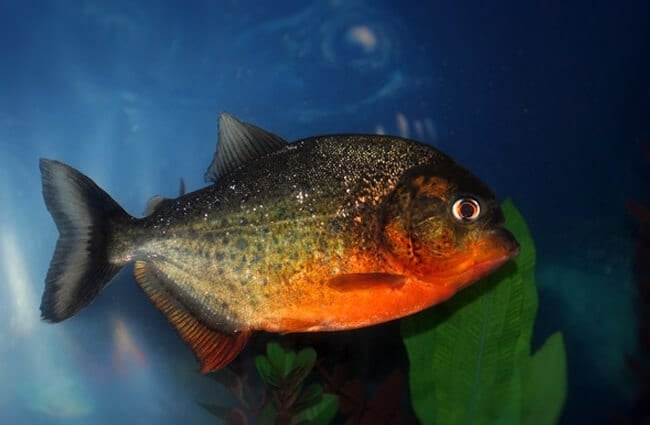
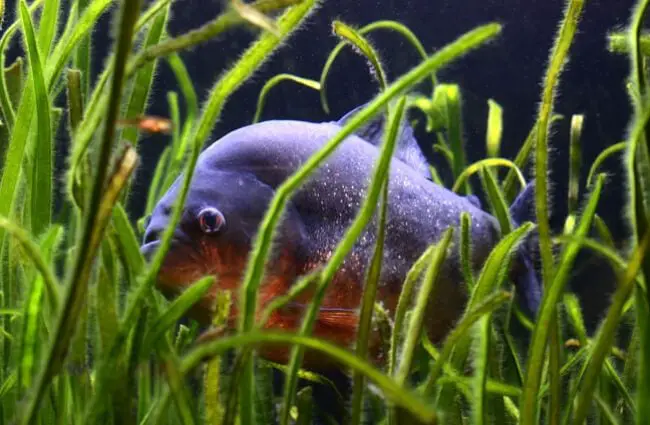





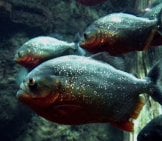
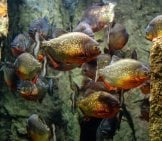
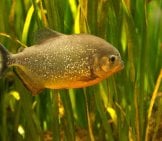
![Red Angus Closeup of a beautiful Red Angus cowPhoto by: U.S. Department of Agriculture [pubic domain]https://creativecommons.org/licenses/by/2.0/](https://animals.net/wp-content/uploads/2020/03/Red-Angus-4-238x178.jpg)


![Red Angus Closeup of a beautiful Red Angus cowPhoto by: U.S. Department of Agriculture [pubic domain]https://creativecommons.org/licenses/by/2.0/](https://animals.net/wp-content/uploads/2020/03/Red-Angus-4-100x75.jpg)

